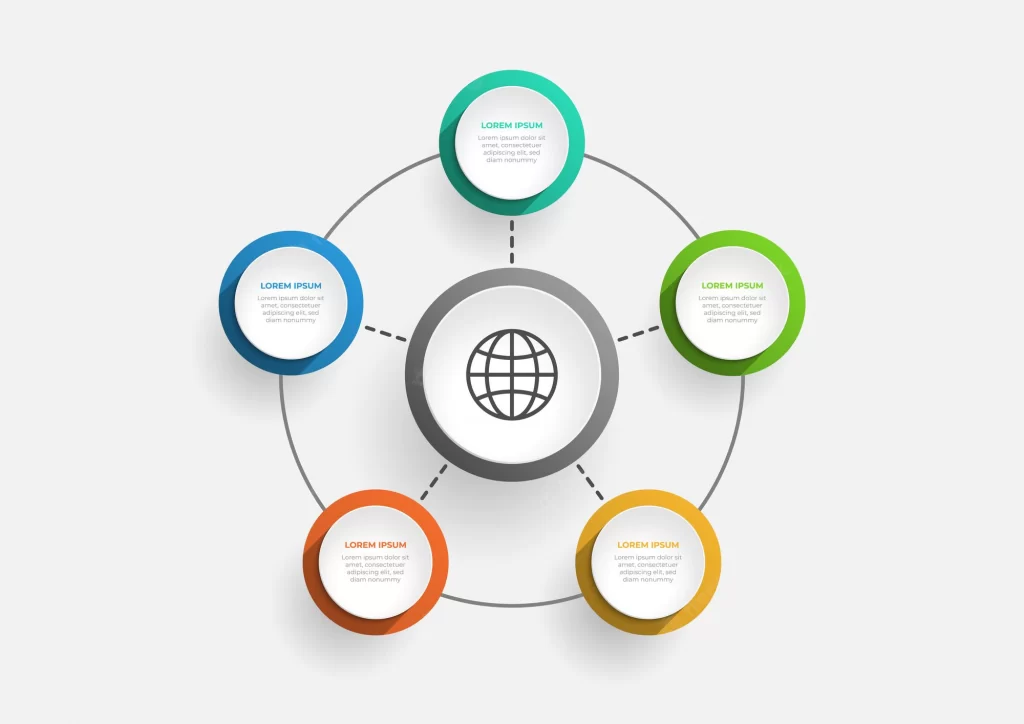Hierarchical Structure
Hierarchical structure is a structure that consists of the power chain and job position of companies. This structure starts from senior management and ends with regular employees of the organization. This structure is used in organizations that include a single leadership and a chain of subordinates. For example, let’s assume a company that includes 10 employees, and in the chart of this organization, the employees are divided into several groups, and each group has a senior manager who is accountable to him and reports their work to him/her.
We can say that the company consists of several levels; So that he has the highest level of power in the company. These structures are usually pyramidal in shape. It is worth mentioning that in making a decision related to the business structure, we should consider all the pros and cons and weigh the needs of the company so that we can make the best decision for the organization.
Advantages of Hierarchical Structure
1. Explicit Definition of the Career Path and Job Promotion Plan
When the organization has this structure, employees are able to recognize power chains and job roles. This structure allows employees to see how they can advance in the company hierarchy. Those with the most experience have a better chance of landing high-level positions.
For this reason, the employees of the organization have more spirit to try and progress in their career path. The opportunity to improve the job position in the hierarchical structure makes the organization’s employees more motivated to provide better performance. As a result, it increases business productivity.
2. Increasing Team Loyalty
In this structure, the company is divided into different departments and teams. When employees consider themselves part of the team, the spirit of teamwork and the feeling of loyalty increases. This is useful for companies because all organizations work for a common goal. Team work and loyalty in business can have a significant impact on the success of the company.

3. Existence of Control Level in the Organization
This structure in the organization makes it possible for employees to understand the levels of leadership. For this reason, management roles in the pyramid structure are more clearly defined. Having control in the business makes operational tasks easier. For example, if we run a large company, we can avoid chaos and confusion in the organization by implementing this structure. The existence of specific hierarchical levels causes more organization and structuring in the company.
4. Explicit Definition of Power Levels in the Organization
Companies have different levels of power and authority in this structure. This means that employees have direct superiors to whom they can report their work. With this structure, communication between employees becomes easier and employees know who their agenda is being implemented. This structure allows businesses to manage employees better and have specific executive positions in the organization instead of executive leaders.
5. Valuing Expertise
Having this structure in the organization gives employees the opportunity to increase their expertise in different fields. For example, a publishing company can have a group of employees such as general reporters and sports reporters. In this situation, general reporters become experts in the field of various news, sports reporters in the field of writing sports news, and designers use their artistic ability in their field of work.

Disadvantages
1. The Possibility of Being Costly
Using the structure means that the company has several departments and includes a large number of managers and team leaders. In other words, the higher the position of the senior management in the organization, the higher the salary of the employees and the annual salary of the company. Because high job roles require higher salaries. In these positions, employees with high level of education have more knowledge and work experience. The high salary paid by the company causes a lot of expenses for the business.
2. Reducing the Speed of Decision-making and Its Implementation
Leadership roles in this structure slow down decision-making. Because most management roles are involved in business decisions. The more the number of managerial roles in decision making, the more difficult it is to reach and make a single decision between them. Each of the officials have different personalities in the workplace and this issue causes disagreements between leaders and presenting different ideas in the company.

3. Communication Impairment
Dividing employees into teams in different departments weakens communication between employees. Because separate managers are considered for each department. Instead of communicating with the executive director, employees should report their work to their superiors and communicate with him. All employees in the company are divided into different departments and do not need to communicate with other people outside their team.
4. Unhealthy Competition Between Sectors
Using this structure, companies divide their employees into teams and groups. These different departments make decisions that are in the interest of their own team and not in line with the company’s goals. Unhealthy competition may arise between different departments. This unhealthy competition damages the work spirit and creates an unhealthy work environment.
Up to Sum
Hierarchical structure is a structure that refers to the power chain and job position of companies. This structure begins with senior managers and ends with ordinary employees, and is used in organizations that include a single leadership and a chain of subordinates.


